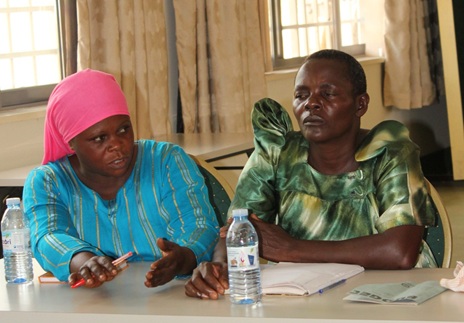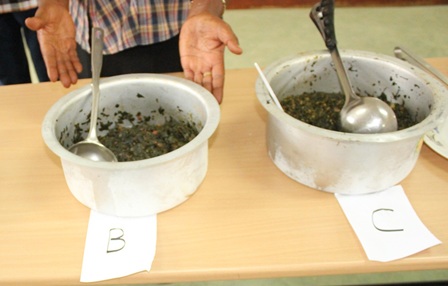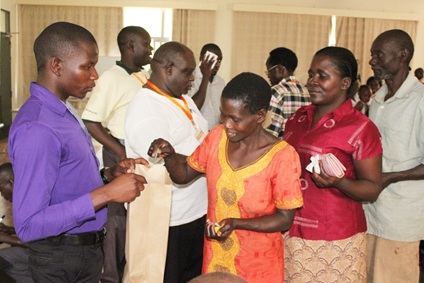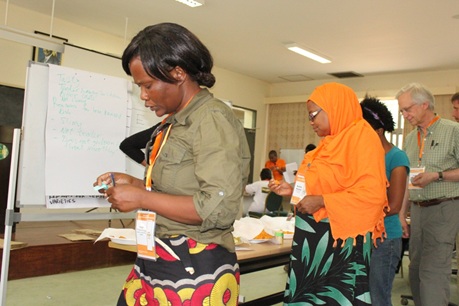

The Speed Breeders held focus group discussions with five categories of sweetpotato end users – children, small scale livestock keepers, women, urban and rural sweetpotato consumers. During these discussions, the end users identified the traits that they most prefer in sweetpotato crops and the reasons why.

For example, one of the livestock keepers told the breeders: “We would like a sweetpotato variety that tastes good, has no strange flavor, is nutritious and produces abundant vines and roots.” Such a variety would be acceptable for household consumption, will be successful at the market and will reduce the costs of feeding livestock.

In the afternoon, the NaCRRI team demonstrated a leaf taste-test evaluation. Sweetpotato leaves had been prepared for consumption using three different local preparation methods. Each of the three cooked leaf varieties was labeled clearly. Before starting the exercise, the attributes were reviewed and clear guidelines provided to the participants.

Using a color card system, the cooked leaves were evaluated for appearance, taste and overall acceptability. The bags for receiving the cards were labeled with the name of the variety (A, B, C) and the attribute being assessed.

After this, the NaCRRI team conducted a pair-wise comparison of the cooked leaves. This stimulated a lot of discussion about the differences and helped to provide detailed explanations about the preferences.

Afterwards, the Speed Breeders used the same approach to simulate a consumer acceptability assessment of boiled roots from five sweetpotato varieties. The varieties, which had been labeled clearly, were evaluated for appearance, fibrousness, starchiness, sweetness and general acceptability.

The exercise simulated during this field visit is part of on-farm participatory varietal testing protocols, which are considered good practice by the Speed Breeders.
These protocols help to introduce varieties to farmers and test performance of promising varieties. They help breeders to learn more about the characteristics and socio-economic environment of the end users, and the desired traits.
They generate important information that breeders can use to tailor their research to the requirements of the end-users and ultimately, to increase adoption of sweetpotato cultivation and utilization.
